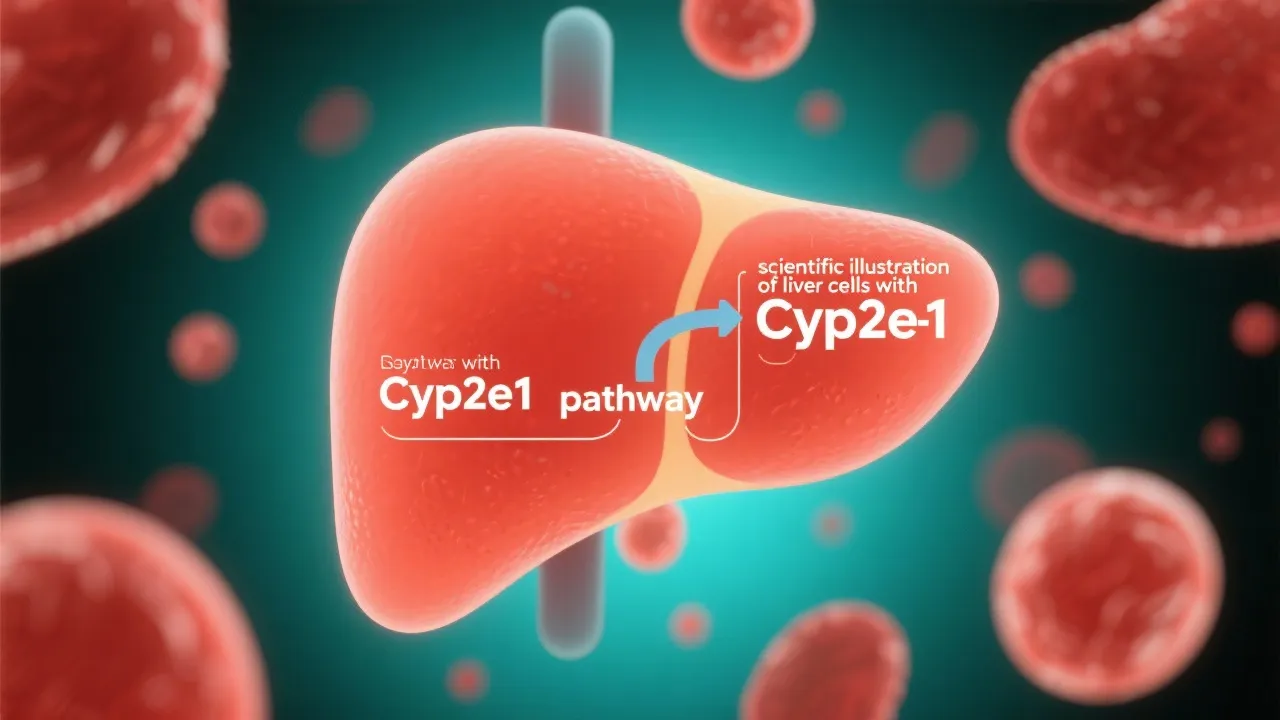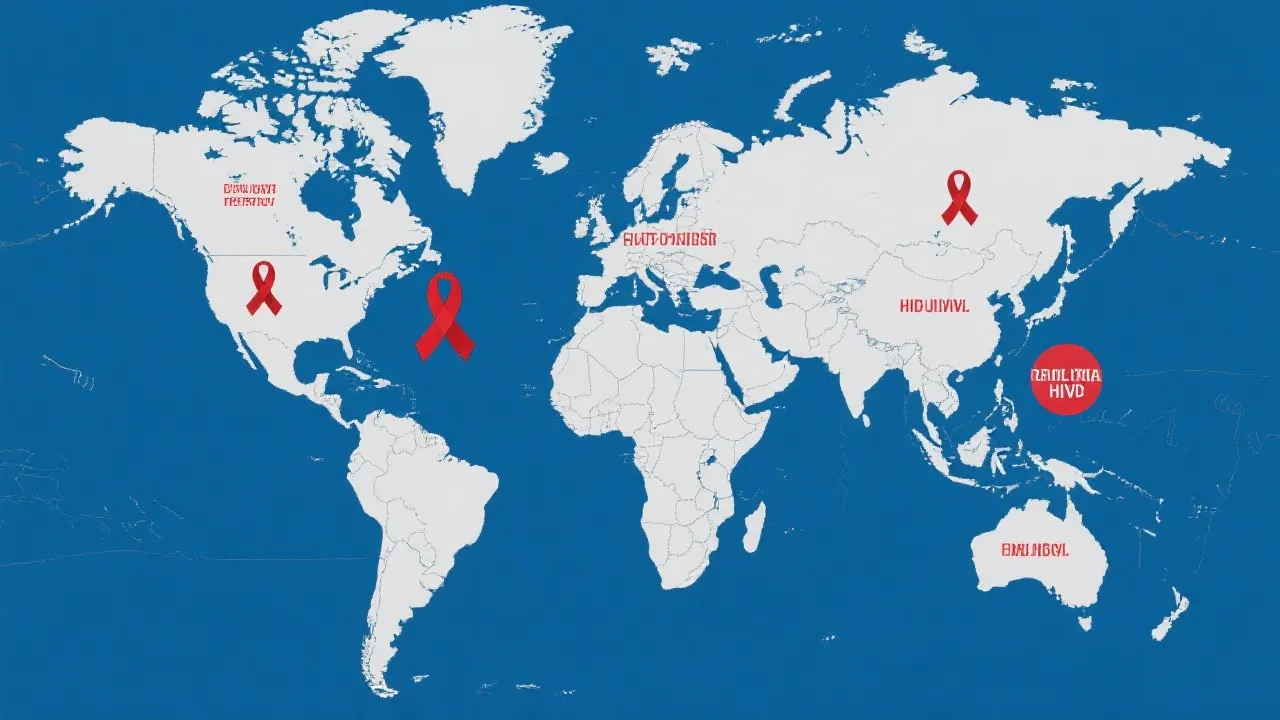Understanding Cyp2e1's Role in NAFLD
This article explores the connection between Cyp2e1 and Non-Alcoholic Fatty Liver Disease (NAFLD), offering an in-depth analysis of their interaction. Cyp2e1 is an enzyme implicated in liver metabolism, while NAFLD is a prevalent liver condition associated with obesity and metabolic syndrome. Understanding their interplay may pave the way for innovative therapeutic strategies and improved disease management.

Introduction to Cyp2e1 and NAFLD
Cyp2e1, or Cytochrome P450 2E1, is a crucial enzyme involved in the metabolism of various endogenous and exogenous substrates. This enzyme is expressed predominantly in the liver, where it plays a pivotal role in the oxidative biotransformation of small organic molecules such as ethanol, acetaminophen, and other drugs. Cyp2e1 is involved in metabolic processes and xenobiotic detoxification, rendering potentially harmful compounds into less toxic metabolites. Understanding the functional dynamics of Cyp2e1 offers insights into both the beneficial and adverse effects it may have on liver health.
Contr pivotal to our understanding of liver pathology is Non-Alcoholic Fatty Liver Disease (NAFLD), which has emerged as a major public health challenge, currently affecting approximately 25% of the global population. The condition is characterized by an excessive build-up of fat in liver cells in individuals who consume little to no alcohol, often linked to obesity, insulin resistance, and components of the metabolic syndrome. NAFLD encompasses a spectrum of liver conditions, ranging from simple steatosis to more severe forms including Non-Alcoholic Steatohepatitis (NASH), liver fibrosis, and cirrhosis, culminating in an increased risk for hepatocellular carcinoma. As such, NAFLD is not merely a benign condition but represents a major threat to global public health, necessitating a more profound exploration of its underlying mechanisms, particularly regarding the role played by key enzymes such as Cyp2e1.
The Molecular Connection Between Cyp2e1 and NAFLD
The pathological mechanisms connecting Cyp2e1 and NAFLD are multifaceted and complex, deeply interfacing metabolic processes with cellular and molecular dynamics that may precipitate liver injury. One of the most consequential properties of Cyp2e1 is its propensity to generate reactive oxygen species (ROS) during its metabolic processes. The generation of ROS can lead to oxidative stress - a crucial factor that is heavily implicated in the pathogenesis of NAFLD. When Cyp2e1 metabolizes substrates, particularly under conditions of hepatic lipid overaccumulation, ROS production can escalate, contributing to lipid peroxidation and subsequent hepatocellular injury.
Oxidative stress can wreak havoc on liver cells, causing cellular damage, inflammation, and progressing fibrotic changes. Indeed, oxidative stress has been heralded as a convergence point in the mechanistic pathway that advances simple steatosis of NAFLD to its more severe form, NASH, and eventually cirrhosis or even liver cancer. Several studies have indicated that elevated levels of Cyp2e1 in NAFLD-affected livers correlate with increased oxidative stress markers and inflammatory cytokines. This suggests a feedback loop whereby Cyp2e1 activity exacerbates hepatic injury, furthering the cycle of inflammation and damage.
Moreover, the regulation of Cyp2e1 activity can be influenced by various environmental and physiological factors. For instance, increased dietary intake of carbohydrates, particularly in forms that promote insulin resistance, can enhance the expression and activity of Cyp2e1, further amplifying its role in the disease process. Moreover, numerous investigations have highlighted the role of hepatic fat accumulation acting not only as a passive storage entity but as an active player in modulating Cyp2e1 activity, leading to a vicious cycle of oxidative stress and inflammation. Therefore, Cyp2e1 emerges as a cornerstone in the interconnected web of biochemical interactions that facilitate NAFLD pathogenesis, meriting a thorough investigation into potential therapeutic interventions targeting this enzyme.
Research and Implications
Understanding the role of Cyp2e1 in NAFLD has broad implications for therapeutic development. Current research is focused on several promising avenues, particularly targeting oxidative stress pathways to develop Cyp2e1 inhibitors as potential treatments for NAFLD. Inhibiting the activity of Cyp2e1 may mitigate the oxidative damage precipitated by its metabolic activity, thereby slowing or halting disease progression.
Additionally, emerging pharmacological agents such as antioxidants or specific enzyme inhibitors are being investigated for their potential to counteract the harmful oxidative processes initiated by Cyp2e1. For instance, agents like vitamin E and certain polyphenols have shown promise in preclinical models of NAFLD by ameliorating oxidative stress, thereby indicating that targeting oxidative stress pathways could be a viable route for therapeutic intervention.
Furthermore, the integration of lifestyle interventions remains a cornerstone in managing NAFLD. Dietary modifications such as adopting a Mediterranean diet, abundant in healthy fats and antioxidants, can enhance liver health and subsequently reduce the burden on Cyp2e1. Weight loss through caloric restriction and the incorporation of regular physical activity can also lead to reduced hepatic fat accumulation, improving liver enzyme levels and overall liver function. These lifestyle alterations not only diminish the metabolic load on the liver but may also improve the balance of Cyp2e1-related oxidative stress and antioxidant defenses.
Recent studies have highlighted the utility of combined approaches utilizing both pharmacological agents targeting Cyp2e1 and lifestyle modifications, yielding significant improvements in liver histology and metabolic markers in patients with NAFLD. This points towards the importance of a multi-faceted approach wherein understanding the molecular mechanisms underlying Cyp2e1's role in NAFLD can translate into tangible improvements in patient outcomes and quality of life. Thus, the research focus on Cyp2e1 is essential as we seek novel therapeutic solutions to combat NAFLD and its associated complications.
A Comparison of Cyp2e1 in Healthy vs. NAFLD-Affected Livers
| Aspect | Healthy Liver | NAFLD-Affected Liver |
|---|---|---|
| Role of Cyp2e1 | Metabolizes small molecules efficiently with minimal oxidative stress. | Increased activity, leading to higher ROS production and oxidative stress. |
| Oxidative Stress Impact | Well-managed through natural antioxidant defenses. | Exceeds the capacity of antioxidant defenses, leading to liver damage. |
| Histological Changes | Normal liver architecture with no fatty deposits. | Presence of fat deposits, inflammation, and possible fibrosis. |
| Cyp2e1 Expression Levels | Typically low and regulated, contributing to normal metabolism. | Upregulated expression correlating with steatosis severity and hepatocellular injury. |
| Pathological Outcomes | No pathological changes or liver disease prevalence. | Potential progression to cirrhosis, hepatocellular carcinoma, and liver failure. |
FAQs
- What triggers an increase in Cyp2e1 activity?
Conditions like obesity, insulin resistance, and high-fat diets can enhance Cyp2e1 activity, contributing to increased oxidative stress in the liver. Moreover, certain drugs and environmental toxins may also induce Cyp2e1 expression, thereby compounding its oxidative effects.
- How can Cyp2e1 activity be modulated?
Cyp2e1 activity can be modulated through a combination of lifestyle changes, pharmacological inhibitors, and the introduction of antioxidants that may reduce oxidative stress and its associated liver damage. For instance, adherence to a balanced diet and maintaining an active lifestyle can help regulate Cyp2e1 activity effectively.
- Is there a genetic component to Cyp2e1 activity?
Yes, genetic polymorphisms can influence Cyp2e1 expression and activity, impacting susceptibility to liver diseases like NAFLD. Variations in genes encoding enzymes involved in its regulation can lead to inter-individual differences in susceptibility to oxidative stress and consequently in the development of NAFLD.
- What are potential side effects of targeting Cyp2e1?
Potential side effects may include alterations in drug metabolism and interactions, given Cyp2e1's role in processing various medications. In particular, inhibiting Cyp2e1 could lead to increased plasma levels of drugs that are typically metabolized by this enzyme, necessitating caution and thorough pharmacokinetic monitoring.
- Can lifestyle changes really impact Cyp2e1 activity?
Yes, lifestyle changes have a significant impact on Cyp2e1 activity. Dietary choices, exercise, and weight management can modulate oxidative stress levels and the overall metabolic environment in the liver, thereby influencing Cyp2e1 expression and activity. Adopting healthier habits can lead to a reduction in liver fat accumulation, thereby diminishing the harmful impacts of Cyp2e1.
- Are there any dietary recommendations to manage Cyp2e1-related oxidative stress?
Incorporating foods high in antioxidants, such as fruits and vegetables, healthy fats from sources like olive oil and nuts, and whole grains can help mitigate oxidative stress driven by Cyp2e1. Reducing intake of processed foods, sugars, and saturated fats is also advised, as these can exacerbate the metabolic syndrome, further promoting NAFLD and its progression.
Conclusion
The interaction between Cyp2e1 and NAFLD underscores the importance of understanding metabolic pathways in liver health. By focusing on the molecular underpinnings that connect these two entities, new therapeutic strategies can be developed to address the growing disease burden affecting millions worldwide. Emphasis on research targeting Cyp2e1 specifically, alongside lifestyle interventions aimed at reducing metabolic stress on the liver, promises to improve patient outcomes and quality of life substantially. Ongoing exploration in this field is crucial, as it may reveal new targets for pharmacological intervention, ultimately paving the way for more effective management strategies for NAFLD and related liver diseases. Therefore, as research advances, it is imperative that a multidisciplinary approach drive forward the understanding and management of NAFLD, benefiting public health and liver disease management on a global scale.
Future Directions in NAFLD and Cyp2e1 Research
The future of research on Cyp2e1 in the context of NAFLD is poised to expand significantly as we continue uncovering the complexities of cellular metabolism and liver pathology. One promising avenue is the investigation of novel therapeutic agents that specifically target Cyp2e1's oxidative stress pathway, with a focus on developing selective inhibitors that could mitigate its deleterious effects without interfering with its beneficial roles in drug metabolism. Synthetic and natural compounds are being explored to inhibit Cyp2e1 directly, with laboratory studies yielding promising preclinical results. For instance, the exploration of certain phytochemicals from herbal extracts is becoming a key interest in the context of hepatic diseases as an alternative therapeutic strategy against NAFLD.
Additionally, advances in genetic research may soon allow for personalized medicine approaches in treating NAFLD, where genetic screening could determine individuals at higher risk of Cyp2e1-related liver damage. Understanding specific genetic polymorphisms may inform tailored lifestyle and pharmacological interventions to maximize therapeutic efficacy and minimize side effects.
Similarly, elucidating the microbiome's role in modulating Cyp2e1 activity represents an exciting frontier in liver health research. The gut-liver axis is increasingly recognized for its importance in metabolic diseases, and insights gained from understanding how gut bacteria influence hepatic enzyme activity could facilitate new diagnostic and therapeutic avenues for NAFLD management.
Furthermore, the global rise in obesity and associated metabolic disorders necessitates longitudinal studies to better understand the long-term risks associated with elevated Cyp2e1 activity and its implications for liver disease progression. Educational campaigns around nutritional awareness and metabolic health must complement scientific advancements to create a well-rounded approach to combat NAFLD.
In conclusion, continued research and comprehensive lifestyle interventions remain critical in the fight against NAFLD, promising improved patient outcomes and quality of life. As we progress, the bidirectional relationship between Cyp2e1 and NAFLD will undoubtedly provide a rich landscape for future exploration, driving innovations that could alter the trajectory of liver disease management globally.





